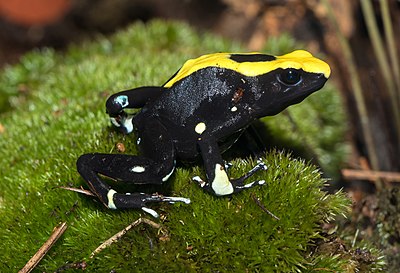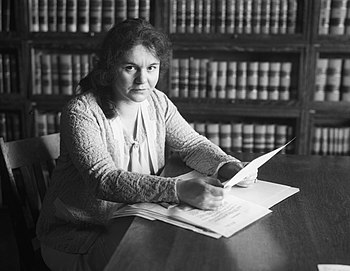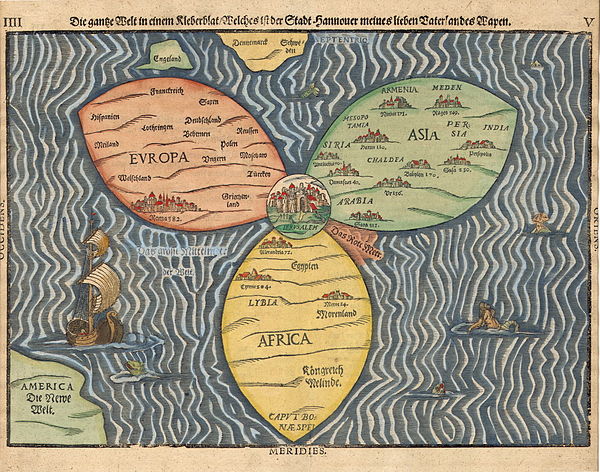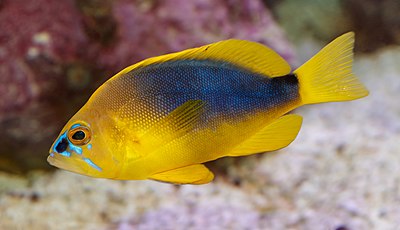|
Featured picture tools: |
These featured pictures, as scheduled below, appeared as the picture of the day (POTD) on the English Wikipedia's Main Page in March 2024. Individual sections for each day on this page can be linked to with the day number as the anchor name (e.g. [[Wikipedia:Picture of the day/March 2024#1]] for March 1).
You can add an automatically updating POTD template to your user page using {{Pic of the day}} (version with blurb) or {{POTD}} (version without blurb). For instructions on how to make custom POTD layouts, see Wikipedia:Picture of the day.Purge server cache
March 1

|
|
Castle Bravo was the first in a series of high-yield thermonuclear-weapon design tests conducted by the United States at Bikini Atoll in the Marshall Islands, as part of Operation Castle. Detonated on March 1, 1954, the device was the most powerful nuclear device detonated by the United States and the first lithium deuteride–fueled thermonuclear weapon tested using the Teller–Ulam design. Castle Bravo's yield was 15 megatonnes of TNT (63 petajoules), 2.5 times the predicted 6 megatonnes of TNT (25 petajoules), due to unforeseen additional reactions involving lithium-7, which led to radioactive contamination in the surrounding area. This photograph shows the Castle Bravo nuclear device, known as SHRIMP, in its shot cab. Photograph credit: United States Atomic Energy Commission; restored by Bammesk
Recently featured:
|
March 2

|
The European stonechat (Saxicola rubicola) is a small passerine bird in the Old World flycatcher family, Muscicapidae. It is found across Europe, as far east as Ukraine and the South Caucasus, and in parts of North Africa. It breeds in heathland, coastal dunes and rough grassland, and is either short-distance migratory or non-migratory, with part of the population moving south to winter further south in Europe and more widely in northern Africa. European stonechats are 11.5 to 13 centimetres (4.5 to 5.1 in) long and weigh 13 to 17 grams (0.46 to 0.60 oz), with both sexes having short wings. The summer male has black upperparts, a black head, an orange throat and breast, and a white belly and vent, while the female has brown upperparts and head, and no white neck patches, rump or belly. This male European stonechat was photographed in Beaulieu in Hampshire, England. Photograph credit: Charles J. Sharp
Recently featured:
|
March 3

|
The Wine Glass is an oil-on-canvas painting by Johannes Vermeer, created around 1660. It portrays a seated woman and a standing man drinking in an interior setting. The work follows the Delft School convention of genre painting, developed by Pieter de Hooch in the late 1650s. It contains figures situated in a brightly lit and spacious interior, while its architectural space is highly defined. The figures are set in the middle ground, rather than positioned in the foreground. The Wine Glass is now in the collection of the Gemäldegalerie in Berlin, Germany. Painting credit: Johannes Vermeer
Recently featured:
|
March 4

|
Haane Manahi (1913–1986) was a New Zealand Māori soldier who served in the Second World War with the Māori Battalion. He joined the battalion in 1939 and fought in the German invasion of Greece, the Battle of Crete and the North African campaign. In April 1943, during the Tunisian campaign, his gallantry in an action at Takrouna resulted in a recommendation, supported by four generals, that he be awarded the Victoria Cross. This was downgraded to an award of the Distinguished Conduct Medal, which disappointed many of his fellow soldiers. After his death in a car crash in 1986, representations were made for a posthumous award of the Victoria Cross for his valour at Takrouna. These representations were unsuccessful but eventually resulted in a special award in 2007 of an altar cloth for use in a local church, a ceremonial sword, and a personal letter from Queen Elizabeth II in recognition of his gallantry. This June 1943 photograph of Manahi was taken in Maadi, Egypt, by George Robert Bull, the official photographer of the New Zealand armed forces. Photograph credit: George Robert Bull; restored by Adam Cuerden
Recently featured:
|
March 5

|
The dyeing poison dart frog (Dendrobates tinctorius) is a species of poison dart frog. It is among the largest species, reaching lengths of 50 millimetres (2.0 in). It is distributed throughout the eastern portion of the Guiana Shield, including parts of French Guiana, Guyana, Suriname and Brazil. This dyeing poison dart frog was photographed in the Karlsruhe Zoo in Germany. Photograph credit: H. Zell
Recently featured:
|
March 6

|
Penyal d'Ifac Natural Park is a 45-hectare natural park situated in Calpe, in the Valencian Community of Spain. It was given natural-park status in 1987. The park is centred on the Penyal d'Ifac, a 332-metre (1,089 ft) limestone outcrop emerging from the sea that is linked to the shore by an isthmus of rock debris. The park is home to numerous rare plants, including a number of endemic species, and more than 300 species of animals, and a nesting site for colonies of sea birds and other birds. Photograph credit: Diego Delso
Recently featured:
|
March 7
Silver certificates are a type of representative money issued between 1878 and 1964 in the United States as part of its circulation of paper currency. They were produced in response to silver agitation by citizens who were angered by the Coinage Act of 1873, which had effectively placed the United States on a gold standard. Since 1968 they have been redeemable only in Federal Reserve Notes and are thus obsolete, but they remain legal tender at their face value and hence are still an accepted form of currency. These are six banknotes from the 1880 series of large-size silver certificates, designed by the Bureau of Engraving and Printing and comprising eight denominations from $1 to $1000. Each banknote bears a portrait of a different individual, identified above. Banknote design credit: Bureau of Engraving and Printing; photographed by Andrew Shiva
Recently featured:
|
March 8

|
Rosalind Goodrich Bates (1894–1961) was an American lawyer and clubwoman, based in Los Angeles, California. She was a founder and served as the president of the International Federation of Women Lawyers. This photograph of Bates, taken around 1931, is part of the Los Angeles Times Photographic Collection at the UCLA Library. Photograph credit: unknown; restored by Adam Cuerden
Recently featured:
|
March 9

|
The spotted pardalote (Pardalotus punctatus) is a small passerine bird native to eastern and southern Australia, at elevations of up to 2,000 metres (6,600 ft). It is part of the pardalote family, Pardalotidae. Weighing around 6 grams (0.21 oz), with a length of 8 to 10 cm (3.1 to 3.9 in), the adult male of the nominate subspecies has grey-brown upperparts with numerous paler buff spots, a black crown, wings and tail all with white spots, white eyebrows and reddish rump. The female is duller overall. This female spotted pardalote was photographed close to Glen Davis, New South Wales, Australia. Photograph credit: J. J. Harrison
Recently featured:
|
March 10

|
Picea abies, commonly known as the Norway spruce, is a species of spruce native to northern, central and eastern Europe. It has branchlets that typically hang downwards, and the largest cones of any spruce, at 9 to 17 centimetres (3.5 to 6.7 in) long. It is very closely related to the Siberian spruce, which replaces it east of the Ural Mountains, and with which it hybridizes freely. The Norway spruce has a wide distribution of planting for its wood, and is the species used as the main Christmas tree in several countries around the world. It was the first gymnosperm to have its genome sequenced. This young female Norway spruce cone, with a length of 43 millimetres (1.7 in) at the time of pollination, was photographed in Keila, Estonia. Photograph credit: Ivar Leidus
Recently featured:
|
March 11

|
|
Cox and Box, also known as The Long-Lost Brothers, is a one-act comic opera with a libretto by F. C. Burnand and music by Arthur Sullivan, based on the 1847 farce Box and Cox by John Maddison Morton. It premiered in 1866 and was Sullivan's first successful comic opera. The story concerns a landlord who lets a room to two lodgers, one who works at night and one who works during the day. When one of them has the day off, they meet each other in the room and tempers flare. Sullivan wrote this piece five years before Thespis, his first opera with W. S. Gilbert. This poster was produced for the first professional production of Cox and Box, which began in 1869 at the Royal Gallery of Illustration in London and ran for 264 performances there. The opera has frequently been used as a curtain raiser for the shorter Gilbert and Sullivan operas and continues to be frequently produced. Poster credit: Alfred Concanen; restored by Adam Cuerden
Recently featured:
|
March 12

|
The eastern chipmunk (Tamias striatus) is a chipmunk species found in eastern North America. It is a small species, reaching about 30 centimetres (12 in) in length, with a weight of 66 to 150 grams (2.3 to 5.3 oz). It has reddish-brown fur on its upper body and five dark brown stripes contrasting with light brown stripes along its back, ending in a dark tail. The eastern chipmunk can climb trees well, but constructs underground nests with extensive tunnel systems, often with several entrances. Its vocal repertoire consists of five sounds: the chip, the chuck, the trills, the whistle or squeal, and chatter. Trills have been measured to occur at the rate of 130 vibrations per minute. The eastern chipmunk lives a solitary life, except during courtship and mating and for the short period that young spend with their mothers after birth. It sometimes hibernates during the winter. This eastern chipmunk with stuffed cheeks was photographed in Prospect Park in Brooklyn, New York. Photograph credit: Rhododendrites
Recently featured:
|
March 13

|
Ethel Reed (March 13, 1874 – 1912) was an internationally recognized American graphic artist. This c. 1895 photograph of Reed, taken by Frances Benjamin Johnston, is in the collection of the U.S. Library of Congress. Photograph credit: Frances Benjamin Johnston; restored by Adam Cuerden
Recently featured:
|
March 14

|
The white-cheeked honeyeater (Phylidonyris niger) is a bird in the honeyeater family, Meliphagidae, native to the east coast and the south-west corner of Australia. It is black and white in colour with a long, sturdy bill that curves downwards, a large bright-yellow tail and wing panels, and a large white cheek-patch on a mainly black head. It is gregarious, active and noisy with swift, erratic flight. This white-cheeked honeyeater was photographed in Maddens Plains in New South Wales, Australia. Photograph credit: John Harrison
Recently featured:
|
March 15

|
|
Fushimi Inari-taisha is the main Shinto shrine of the Japanese deity Inari Ōkami, located in Fushimi-ku, Kyoto. It sits at the base of a mountain, also named Inari, located 233 metres (764 ft) above sea level. The site's earliest structures were built in 711 on the Inariyama hill in southwestern Kyoto, but the shrine was re-located in 816 on the request of the monk Kūkai. It gained imperial patronage during the early Heian period and the main shrine structure was built in 1499. This photograph shows a torii path at Fushimi Inari-taisha with a hanging lantern. Each of the shrine's roughly 10,000 torii (gates) was donated by a Japanese business, and approximately 800 of these are set up in rows, as depicted here, that give the impression of entering a tunnel. Photograph credit: Basile Morin
Recently featured:
|
March 16

|
|
The bombing of Gaza is an ongoing aerial bombardment campaign on the Gaza Strip by the Israeli Air Force during the Israel–Hamas war. During the bombing, which began on 7 October 2023 after a Hamas-led attack on Israel, airstrikes have damaged Palestinian mosques, schools, hospitals, refugee camps, and civilian infrastructure. The campaign has been compared to other major historical bombing campaigns, including the bombings of Dresden and Tokyo during World War II. This photograph shows damage following an Israeli airstrike on the neighborhood of Rimal in Gaza City on 9 October 2023. Photograph credit: Wafa / APAimages
Recently featured:
|
March 17

|
The green shield bug (Palomena prasina) is a species of shield bug in the family Pentatomidae. It is commonly found throughout Europe, including Great Britain and Ireland, in a large variety of habitats, including gardens. The species displays different colouration during each nymphal stage, light brown, black or green-black, and in the final stage, the imago, is bright green with short wings. The imago stage is usually reached in September, with hibernation occurring in November. This green shield bug was photographed on Cumnor Hill in Oxfordshire, England. Photograph credit: Charles J. Sharp
Recently featured:
|
March 18

|
Acanthite is a form of silver sulfide with the chemical formula Ag2S. It was first described in 1855 for an occurrence in the Ore Mountains in the present-day Czech Republic. The name is derived from the Greek "akantha" meaning thorn or arrow, in reference to its crystal shape. Acanthite crystallizes in the monoclinic system and is the stable form of silver sulfide below 173 °C (343 °F). As argentite cools below that temperature, its cubic form is distorted to the monoclinic form of acanthite. This crystal of acanthite, with dimensions of 4.0 cm × 2.5 cm × 1.5 cm (1.57 in × 0.98 in × 0.59 in), was extracted from a mine in Imider, in the Jbel Saghro, a mountain range in Morocco. This photograph has been focus-stacked from 42 separate images. Photograph credit: Ivar Leidus
Recently featured:
|
March 19

|
|
The Museu de les Ciències Príncipe Felipe is a science museum in Valencia, Spain. It is part of the City of Arts and Sciences architectural complex. The building is over 40,000 square metres (430,000 sq ft), has a height of 55 metres (180 ft), and was designed to resemble the skeleton of a whale, with a facade designed by Santiago Calatrava. Construction started around 1994, and the building was inaugurated in 2000, following an investment of 26 billion pesetas. This photograph shows the exterior of the museum, as seen from the southeast. Photograph credit: Diego Delso
Recently featured:
|
March 20

|
The crested caracara (Caracara plancus), also known as the Mexican eagle, is a bird of prey in the family Falconidae. It is found throughout Central and South America, with a maximum range extending north to Minnesota and south to Tierra del Fuego. A bold, opportunistic raptor, it is often seen walking around on the ground looking for food. It mainly feeds on the carcasses of dead animals, but steals food from other raptors, raids bird and reptile nests, and takes live prey if the possibility arises. This adult crested caracara was photographed in the Serra da Canastra National Park, Brazil. Photograph credit: Andreas Trepte
Recently featured:
|
March 21

|
Arabis hirsuta, also known as the hairy rock-cress, is a flowering plant of the genus Arabis in the family Brassicaceae. In previous North American works, this species has been broadly defined to include plants native to Europe, Asia, and the northern half of North America, but the name is now more often used to describe a narrower subgroup. The species grows on chalk slopes, dunes, hedgebanks, walls and rocks. Arabis hirsuta grows to a height of up to around 75 centimetres (30 inches) and is usually unbranched, with a long spike of flowers and stiff hairs. The lower leaves of the plant form a rosette, while the stalkless upper leaves clasp the stem. Flowering is from June to August. It has white petals, cylindrical fruits pressed close to the stem and reddish brown seeds. This A. hirsuta plant at the start of its flowering phase was photographed in Keila, Estonia. Photograph credit: Ivar Leidus
Recently featured:
|
March 22

|
Laocoön and His Sons is an ancient sculpture which was excavated in Rome, Italy, in 1506. It depicts the Trojan priest Laocoön and his sons Antiphantes and Thymbraeus being attacked by sea serpents. The figures in the statue are nearly life-sized, with the entire group measuring just over 2 metres (6 ft 7 in) in height. The statue is likely to be the same one that received praise from the Roman writer Pliny the Elder, who attributed the work (then housed in the palace of the emperor Titus) to three Greek sculptors from the island of Rhodes: Agesander, Athenodoros and Polydorus, but he did not mention the work's date or patron. Modern scholars are not certain of the work's origins; it might be an original work or a copy of an earlier bronze sculpture. After its discovery, Laocoön and His Sons was put on public display in the Vatican Museums, where it remains. Sculpture credit: attributed to Agesander, Athenodoros and Polydorus; photographed by Wilfredo Rodríguez
Recently featured:
|
March 23

|
Frere Hall is a building in Karachi, Pakistan, built in 1865 to serve as the city's town hall during British colonial rule in the Indian subcontinent. Named in 1884 in honour of Henry Bartle Frere, a British administrator who had earlier served as Commissioner of Sind and Governor of Bombay, the building is now a library and a tourist attraction noted for its Venetian Gothic architecture, and is also used for exhibitions and events. Photographed credit: Alexander Savin
Recently featured:
|
March 24

|
PAGEOS (Passive Geodetic Earth Orbiting Satellite) was a balloon satellite which was launched by NASA in 1966. It was placed into a polar orbit (inclination 85–86°) with a height of approximately 4000 km, which became gradually lower during its nine years of operation. The satellite partly disintegrated in July 1975, which was followed by a second break-up that occurred in January 1976 resulting in the release of a large number of fragments. Most of these re-entered the Earth's atmosphere during the following decade. This photograph shows a test inflation of a PAGEOS satellite in a blimp hangar at Weeksville, North Carolina, in 1965. Photograph credit: NASA
Recently featured:
|
March 25

|
Ulysses S. Grant (1822–1885) was the 18th president of the United States, in office from 1869 to 1877. He graduated from the U.S. Military Academy at West Point and retired after serving in the Mexican–American War. When the Civil War began in 1861, he rejoined the U.S. Army and won major victories at Shiloh and Vicksburg, and in the Chattanooga campaign. After promotion to Commanding General, Grant confronted Robert E. Lee in a series of bloody battles in Virginia in 1864, trapping Lee's army in the siege of Petersburg. Lee's surrender to Grant at Appomattox on April 9, 1865, ended the war. After the war, he implemented Congressional Reconstruction. Elected president in 1868, Grant led the Republicans in their effort to remove the vestiges of Confederate nationalism, protect African-American citizenship, and support economic prosperity nationwide. In foreign policy, Grant sought to increase American trade and influence, while remaining at peace with the world. His presidency has often come under criticism for tolerating corruption and, in his second term, leading the nation into an economic depression. After an unsuccessful attempt at nomination for a third term in 1880, he completed his memoirs, garnering critical acclaim and financial success. This line engraving of Grant was produced by the Bureau of Engraving and Printing (BEP) as part of a BEP presentation album of the first 26 presidents. Engraving credit: Bureau of Engraving and Printing; restored by Andrew SHiva
Recently featured:
|
March 26

|
The red-browed finch (Neochmia temporalis) is a species of estrildid finch that inhabits the east coast of Australia. The species is distinguished by the bright red stripe above the eye, and bright red rump. The rest of the body is grey, with olive wing coverts and collar. Juveniles do not have red brow marks, and they lack olive colouration on the collar and wing coverts. The adults are 11 to 12 centimetres (4.3 to 4.7 inches) long. This red-browed finch was photographed in Penrith, New South Wales. Photograph credit: John Harrison
Recently featured:
|
March 27

|
|
The Bünting cloverleaf map is a historic mappa mundi drawn by the German theologian and cartographer Heinrich Bünting. The map was published in his book Itinerarium Sacrae Scripturae in 1581. The map depicts the three continents of the Old World, Europe, Africa and Asia, as three leaves forming the shape of a clover, with Jerusalem at the centre. The three continents include captions for some of their countries and illustrations of cities. The clover is surrounded by the ocean, with its surface including illustrations of sea creatures, monsters, and a ship. England and Denmark are represented as two island-shapes above Europe's leaf, while the Americas are shown as a mostly unrevealed shape in the lower left corner, captioned Die Neue Welt (the New World). Map credit: Heinrich Bünting
Recently featured:
|
March 28

|
|
Crepidotus is a genus of fungus in the family Crepidotaceae. Species of Crepidotus all have small, convex to fan-shaped sessile caps and grow on wood or plant debris. The species are cosmopolitan in distribution, and are well-documented from the Northern temperate to the South American regions. This Crepidotus variabilis cap growing on a branch was photographed in De Famberhorst, a nature reserve near Joure in Friesland, Netherlands. The photograph was focus-stacked from 42 separate images. Photograph credit: Dominicus Johannes Bergsma
Recently featured:
|
March 29

|
Head of Christ is a painting in oil on panel by the Italian Renaissance painter Antonio da Correggio, dated 1521. It depicts the head of Christ, wearing the crown of thorns. In the background there is a white cloth showing that the image represents the Veil of Veronica, but Christ's head is given volume through alternate use of light and dark shadows. The painting is in the J. Paul Getty Museum in Los Angeles. Correggio was known for creating some of the most sumptuous religious paintings of the period. The Getty Museum considers this artwork as one of the masterpieces of painting held by the museum. Painting credit: Antonio da Correggio
Recently featured:
|
March 30

|
The City Palace of Jaipur, constructed between 1727 and 1732, is a royal residence located in Jaipur, Rajasthan, India. It was the ceremonial and administrative seat of the Kingdom of Amber, and home of its rulers, from the time of the state's foundation in 1727 by Maharaja Sawai Jai Singh II until 30 March 1949. The palace continues to be a residence of the royal family of Jaipur and is a popular tourist attraction. This picture shows the Leheriya gate, one of four intricately designed gates in an inner courtyard of the palace. The gate is dedicated to Hindu god Ganesha (carved above the door) with the green colour representing the season of spring. Photograph credit: Jakub Hałun
Recently featured:
|
March 31

|
The shy hamlet (Hypoplectrus guttavarius) is a small Western Atlantic species of fish in the family Serranidae. It is found predominantly around rocks and corals in Caribbean inshore areas at low depths, in temperatures of about 22 to 27 °C (72 to 80 °F). The shy hamlet has a yellow head and fins followed by a brown-black body, with bright blue stripes around the eye and on the snout. The species is carnivorous, feeding on crustaceans as well as other bony fish. This shy hamlet was photographed in an aquarium at Wilhelma, a zoological-botanical garden in Stuttgart, Germany. Photograph credit: H. Zell
Recently featured:
|
Picture of the day archives and future dates





